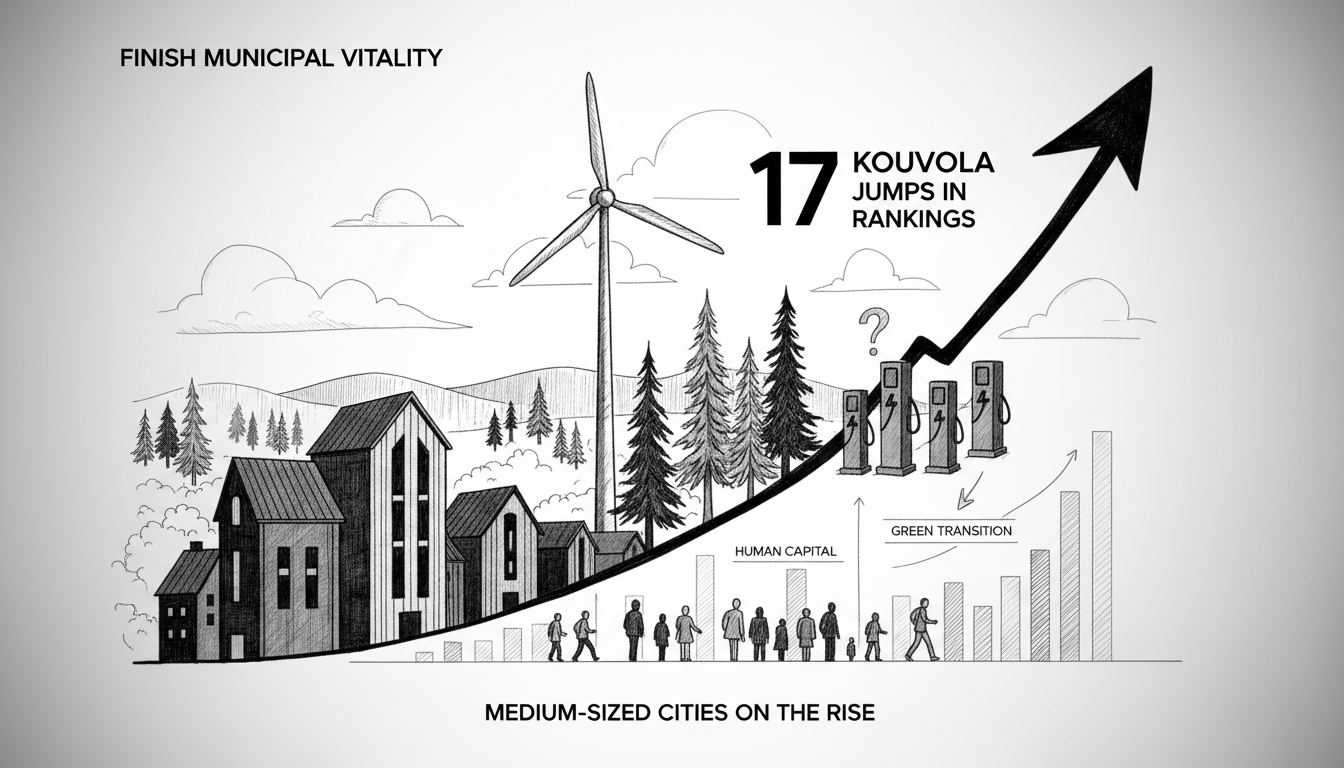The city of Kouvola climbed 17 positions in Finland's municipal vitality assessment compared to last year. This comprehensive study by planning consultancy WSP Finland evaluated all 292 mainland municipalities across three key areas: productivity, human capital, and green transition capabilities.
Kouvola now ranks 102nd overall, a substantial improvement from its 123rd position when the study began. The city performed particularly well in human capital development and green transition initiatives. It earned strong scores for reducing emissions and making environmentally conscious investments.
However, the city faced challenges in several areas. Net migration and birth rates remained concerns, with Kouvola scoring only seven and five points respectively out of ten. Employment rates and municipal debt also contributed to modest scores in the productivity category.
The most surprising result came from electric vehicle adoption. Kouvola received its lowest score specifically for the prevalence of electric cars within city limits. This indicates that while the city performs well in broader environmental categories, EV infrastructure and adoption lag behind other municipalities.
Kouvola's improvement follows the general trend among medium-sized Finnish cities. This group saw an average eight-position improvement in the rankings. The study identified reduced child poverty rates as a key factor driving improvements across medium-sized municipalities.
Among medium-sized cities, Kotka showed the most dramatic improvement, climbing 29 positions to reach 104th place. The rankings reveal widening disparities between municipalities nationwide. Population decline affected 221 municipalities last year, while only 88 municipalities experienced growth.
Regional comparisons show Kymenlaakso, where Kouvola is located, gathered 109 points overall. The region's population changes resulted in substantial negative scoring. Only South Savonia performed worse among Finnish regions.
The top-performing municipalities in the study were Pirkkala, Porvoo, Raisio, Helsinki, and Espoo. These communities demonstrated strong performance across all measured indicators, setting benchmarks for other Finnish municipalities.
This vitality assessment provides crucial insights for urban planning and regional development. The results help municipalities identify strengths and weaknesses while guiding policy decisions. For international observers, the study offers valuable perspective on regional development trends within Finland's decentralized governance model.
The electric vehicle scoring deserves particular attention from municipal planners. As Finland pushes toward greener transportation, cities like Kouvola may need to prioritize EV infrastructure development to maintain competitive positioning in future assessments.

